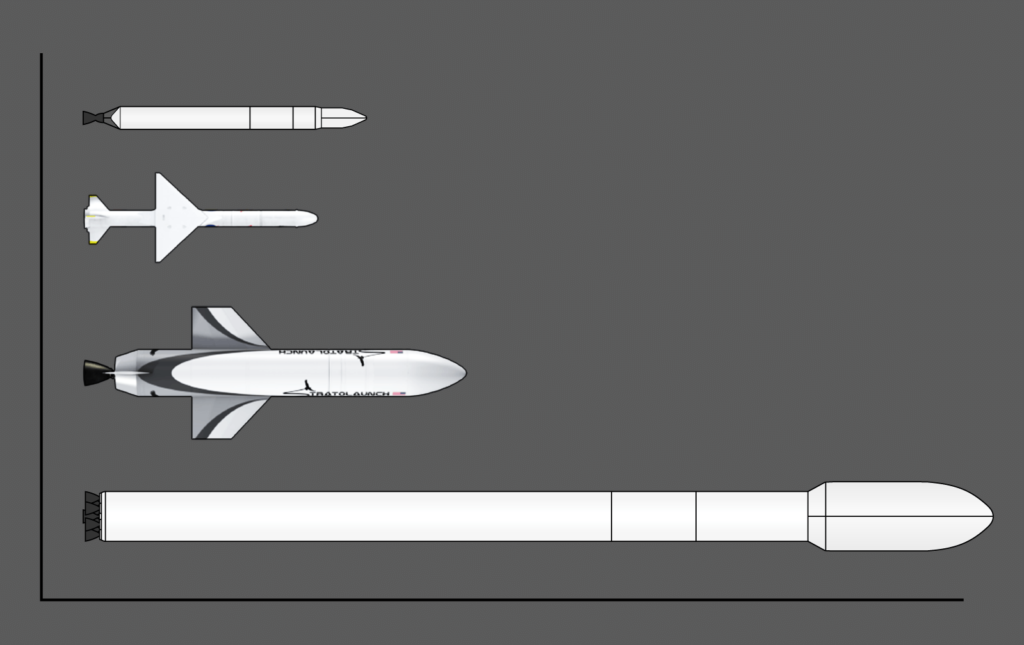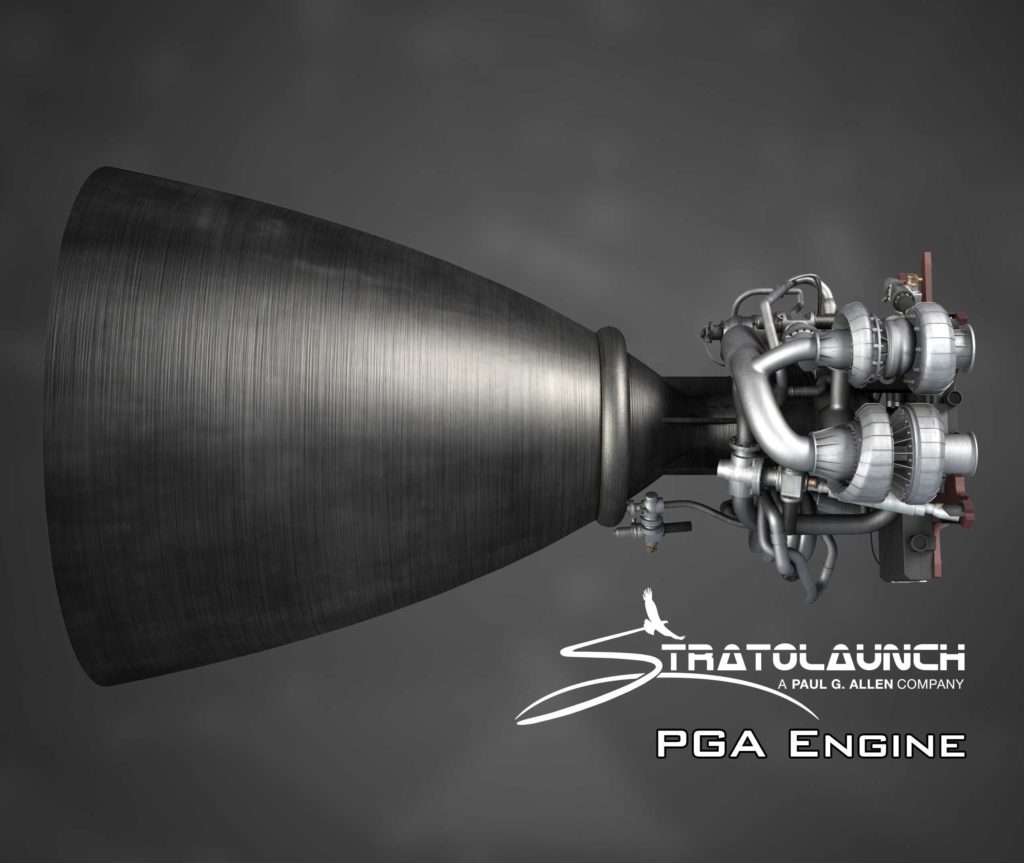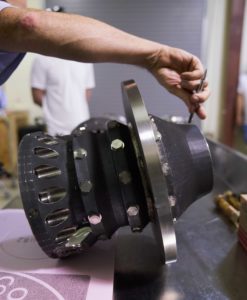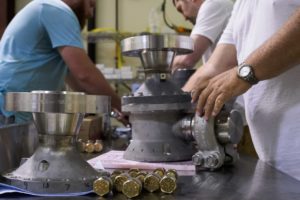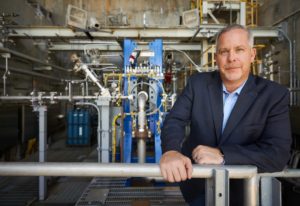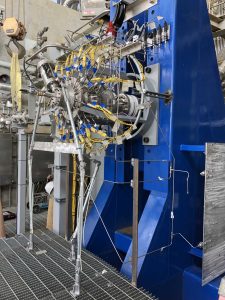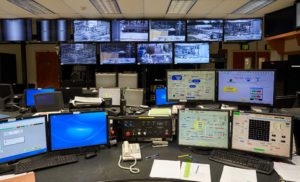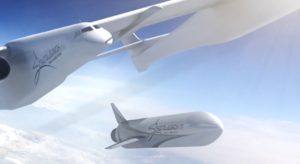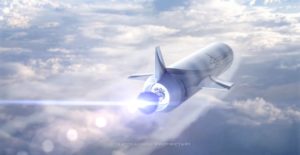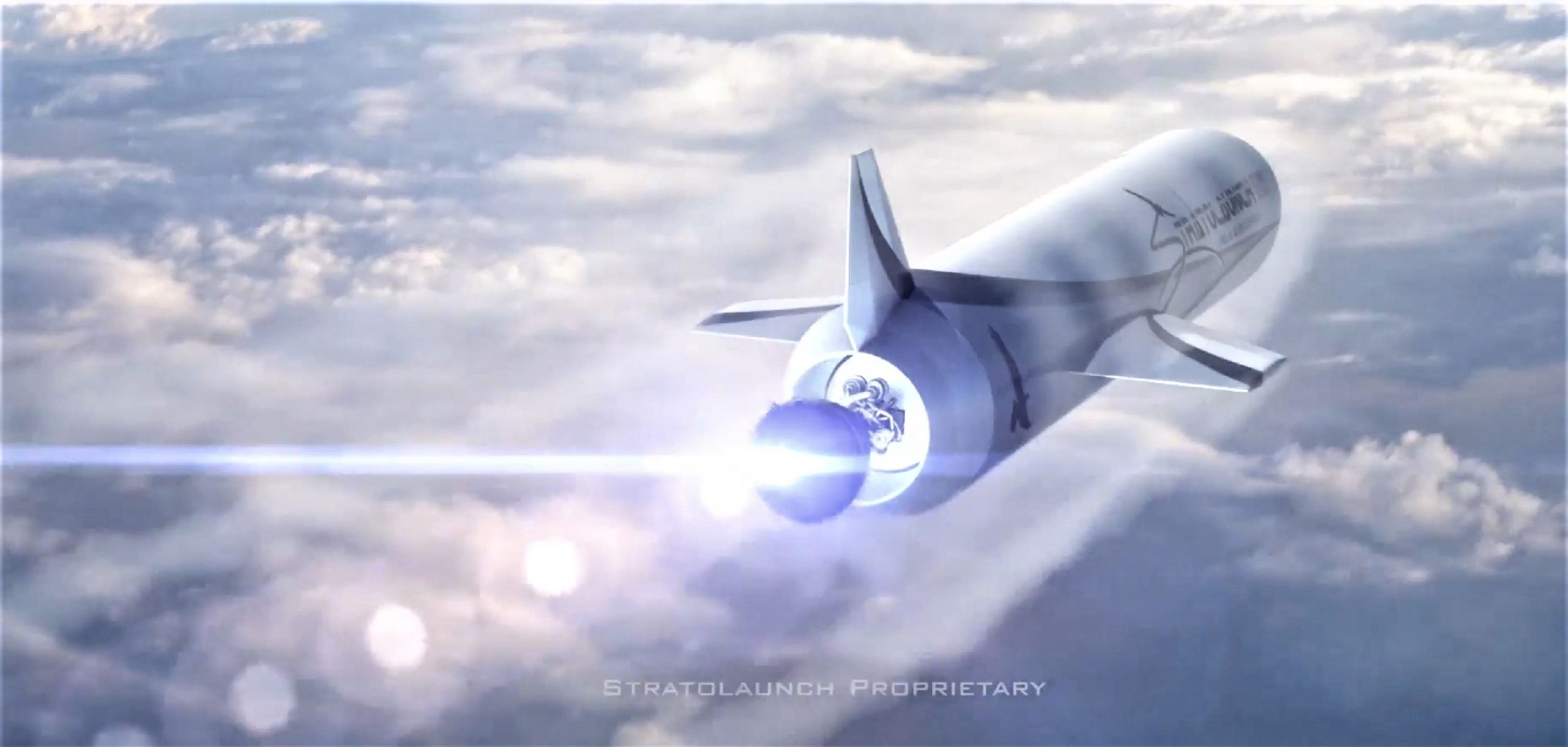
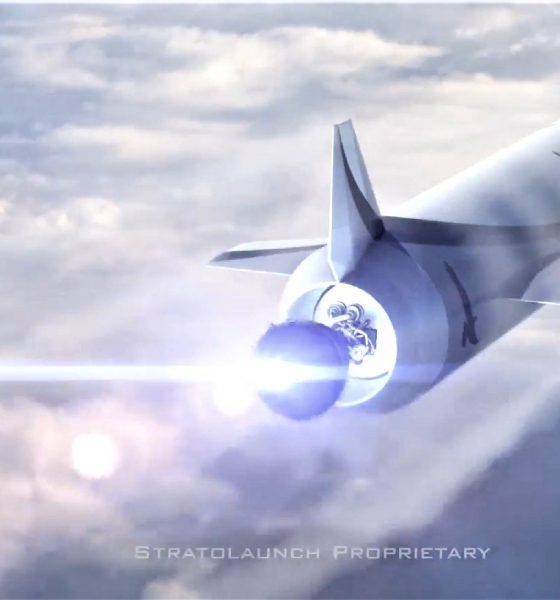
News
Ex-SpaceX engineer leads Stratolaunch to major rocket engine test milestone
Led by rocket propulsion expert Jeff Thornburg, Stratolaunch – famous for owning the largest fixed-wing aircraft ever built – has completed the first hot-fire test of a full-scale rocket engine component known as the preburner, a major milestone in the development of any launch vehicle or propulsion system.
Despite the significant size and power of the component, destined to support an engine that will generate 200,000 pounds (~900 kN) of thrust, Thornburg and his team of engineers and technicians have managed to go from designing the preburner to successfully hot-firing a full-scale test article, an extraordinary achievement by any measure.
The team made amazing progress this week! Check out the #PGAEngine preburner’s first hot-fire test at @NASAStennis. #NewUSEngine pic.twitter.com/kKTnf0bj1S
— Stratolaunch (@Stratolaunch) November 6, 2018
Aside from SpaceX, Blue Origin, and Aerojet-Rocketdyne, Stratolaunch is the only private entity developing – let alone testing full-scale parts for – a liquid-fueled rocket engine as large as PGA. Shorthand for the Stratolaunch’s late founder and bankroller Paul G. Allen, PGA is a fuel-rich staged combustion cycle engine that uses liquid hydrogen and oxygen (hydrolox) fuel and oxidizer, typically resulting in high efficiency. In terms of scale and thrust, PGA is very closely comparable to SpaceX’s Merlin 1D engine, which uses kerosene instead of hydrogen but produces roughly 190,000 lbf (850 kN) of thrust and stands 4 feet (1.2m) wide and ~10 feet (~3m) tall.
Another major difference between PGA and Merlin 1D is the fact Merlin 1D’s nozzle is largely optimized for sea level while PGA is being built for a rocket that will be “launched” from a massive plane flying around 35,000 feet (~10.5 km), ultimately resulting in a nozzle that is much wider and longer, featuring nearly the same proportions as fully vacuum-optimized engines like SpaceX’s MVac. By widening the nozzle relative to the rest of the engine, rocket engines are able to operate far more efficiently at higher altitudes, where Earth’s atmosphere thins and exerts less pressure on the escaping exhaust gases. This is visualized well by the visible expansion of rocket exhausts during launches, morphing from a straight cylinder to a massive teardrop-shaped plume. At lower altitudes (and thus higher atmospheric pressures), wider nozzles can produce extreme turbulence and will ultimately shake themselves to destruction, preventing their usage on ground-launched rocket boosters.
Judging from official renders of the engine, PGA’s in-atmosphere variant appears to utilize a form of regenerative nozzle cooling very similar to that used on M1D, where liquid propellant flows through thin capillaries sandwiched between two or more layers of metal to cool the nozzle much like cold water chills the skin of an uninsulated water bottle.
- A to-scale comparison of Falcon 1, Pegasus XL, MLV, and Falcon 9. (Teslarati/Stratolaunch/Wikipedia)
- A render of Stratolaunch’s impressive PGA engine. Note the giant nozzle relative to the throat. (Stratolaunch)
Testing rocket engine preburners
In the case of staged combustion cycle hydrolox rocket engines, a small portion of liquid oxygen and all of the liquid hydrogen (hence “fuel-rich”) are mixed and combusted to generate hot gas that then spools up the engine’s primary turbopump(s), ultimately drawing fuel and oxidizer into the combustion quickly enough to ignite the engine and generate sustained thrust. The components that get those main turbopumps started are known collectively as the preburner, which is what Stratolaunch successfully tested – at full-scale – for the first time ever last week. For any liquid rocket engine that cannot solely rely on propellant tank pressure to deliver fuel to the combustion chamber, full-scale tests of preburners or gas-generators effectively mark the moment that engines truly become real.
“This is the first step in proving the performance and highly efficient design of the PGA engine. The hot-fire test is an incredible milestone for both the propulsion team and Stratolaunch.” – Jeff Thornburg, VP of Propulsion, Stratolaunch
Stratolaunch’s propulsion team will continue to test the preburner for longer durations and at higher power levels over the next several months, likely optimizing operations and tweaking or upgrading the preburner’s hardware as real tests produce valuable lessons-learned. Built entirely with additive manufacturing (3D printing), the team should be able to rapidly iterate on the physical design of the engine, a rarity in a field where traditional fabrication methods can take weeks or months to produce complex turbomachinery components with mercilessly strict tolerances.
According to Thornburg, the ultimate goal is to continue that additive-manufacturing-only strategy throughout the development of this rocket engine, theoretically enabling unprecedented design flexibility while also slashing production time throughout. PGA will ultimately power the creatively-named Medium Launch Vehicle (MLV), a small-ish air-launched rocket designed to place a respectable 3400 kg into low Earth orbit (LEO) as early as 2022, as well as a Heavy version of MLV and, potentially, a reusable spaceplane somewhere down the line.
- PGA’s first full-scale preburner seen during assembly. (Stratolaunch)
- PGA’s first full-scale preburner seen during assembly. (Stratolaunch)
- Jeff Thornburg stands in front of Stratolaunch’s NASA Stennis Space Center test stand. (Stratolaunch)
- The PGA preburner seen after installation at Stennis. (Stratolaunch)
- The control center. (Stratolaunch)
- MLV is released from Stratolauncher. (Stratolaunch)
- A concept video produced by Stratolaunch shows the Roc launching a Kraken rocket. (Stratolaunch, via Wired)
For prompt updates, on-the-ground perspectives, and unique glimpses of SpaceX’s rocket recovery fleet check out our brand new LaunchPad and LandingZone newsletters!

News
Tesla Semi program Director teases major improvements
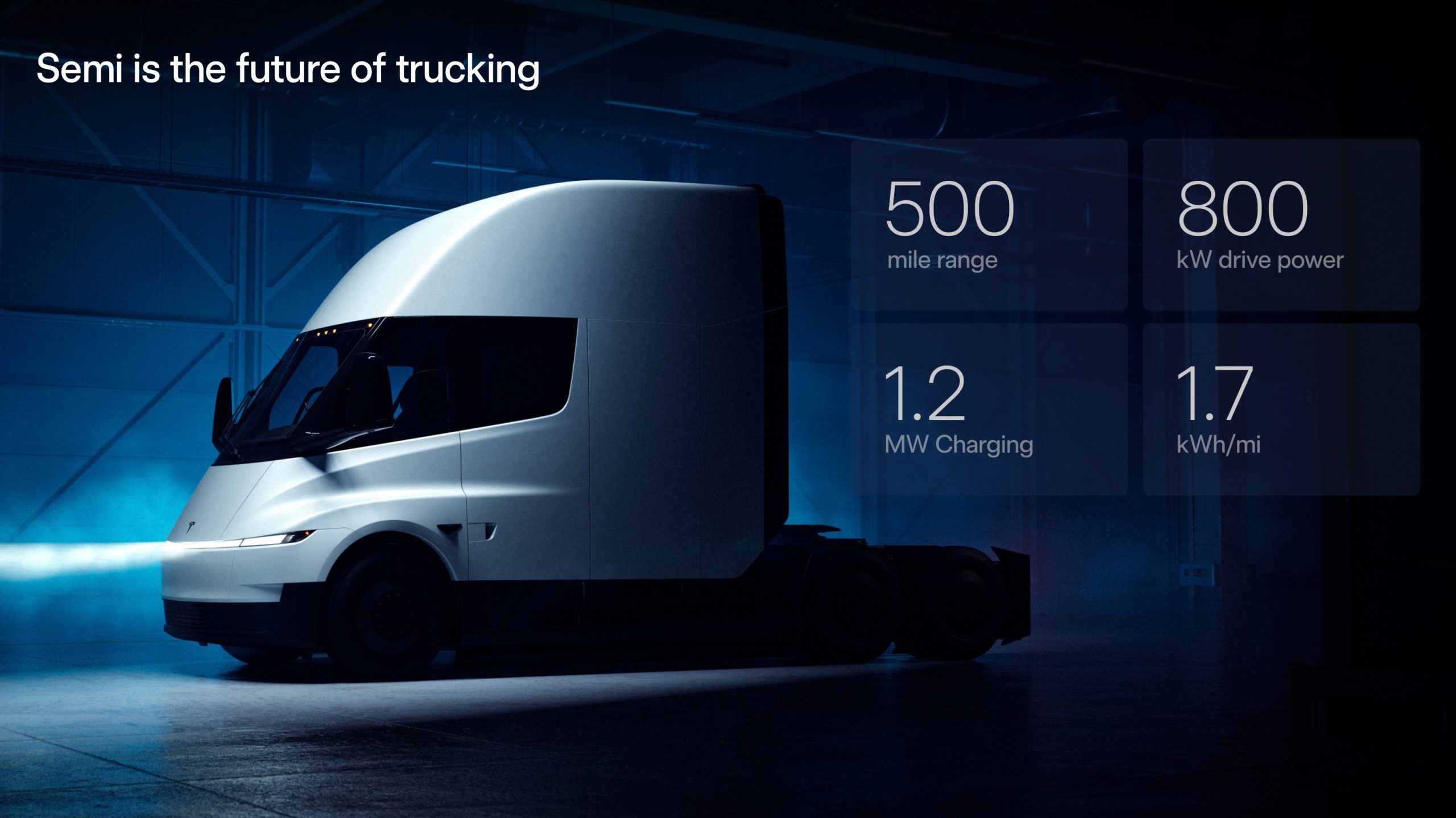
Tesla Semi Program Director Dan Priestly teased the major improvements to the all-electric Class 8 truck on Thursday night, following the company’s decision to overhaul the design earlier this year.
Priestley said he drove the Semi on Thursday, and the improvements appear to be welcomed by one of the minds behind the project. “Our customers are going to love it,” he concluded.
Just drove the redesigned Semi. Our customers are going to love it. https://t.co/KZ88sf1CDL
— Dan Priestley (@danWpriestley) December 19, 2025
The small detail does not seem like much, but it is coming from someone who has been involved in the development of the truck from A to Z. Priestley has been involved in the Semi program since November 2015 and has slowly worked his way through the ranks, and currently stands as the Director of the program.
Tesla Semi undergoes major redesign as dedicated factory preps for deliveries
Tesla made some major changes to the Semi design as it announced at the 2025 Annual Shareholder Meeting that it changed the look and design to welcome improvements in efficiency.
Initially, Tesla adopted the blade-like light bar for the Semi, similar to the one that is present on the Model Y Premium and the Cybertruck.
Additionally, there are some slight aesthetic changes to help with efficiency, including a redesigned bumper with improved aero channels, a smaller wraparound windshield, and a smoother roofline for better aero performance.
All of these changes came as the company’s Semi Factory, which is located on Gigafactory Nevada’s property, was finishing up construction in preparation for initial production phases, as Tesla is planning to ramp up manufacturing next year. CEO Elon Musk has said the Semi has attracted “ridiculous demand.”
The Semi has already gathered many large companies that have signed up to buy units, including Frito-Lay and PepsiCo., which have been helping Tesla test the vehicle in a pilot program to test range, efficiency, and other important metrics that will be a major selling point.
Tesla will be the Semi’s first user, though, and the truck will help solve some of the company’s logistics needs in the coming years.
News
Tesla dominates in the UK with Model Y and Model 3 leading the way

Tesla is dominating in the United Kingdom so far through 2025, and with about two weeks left in the year, the Model Y and Model 3 are leading the way.
The Model Y and Model 3 are the two best-selling electric vehicles in the United Kingdom, which is comprised of England, Scotland, Wales, and Northern Ireland, and it’s not particularly close.
According to data gathered by EU-EVs, the Model Y is sitting at 18,890 units for the year, while the Model 3 is slightly behind with 16,361 sales for the year so far.
The next best-selling EV is the Audi Q4 e-tron at 10,287 units, lagging significantly behind but ahead of other models like the BMW i4 and the Audi Q6 e-tron.
GOOD NEWS 🇬🇧 Tesla is absolutely crushing the UK electric vehicle market in 2025 💥
The numbers are in, and the dominance is clear. With an impressive amount of 42,270 vehicles delivered year-to-date, the brand now commands a solid 9.6% market share of the total auto market 🆒… pic.twitter.com/dkiGX9kzd0
— Ming (@tslaming) December 18, 2025
The Model Y has tasted significant success in the global market, but it has dominated in large markets like Europe and the United States.
For years, it’s been a car that has fit the bill of exactly what consumers need: a perfect combination of luxury, space, and sustainability.
Both vehicles are going to see decreases in sales compared to 2024; the Model Y was the best-selling car last year, but it sold 32,610 units in the UK. Meanwhile, the Model 3 had reached 17,272 units, which will keep it right on par with last year.
Tesla sold 50,090 units in the market last year, and it’s about 8,000 units shy of last year’s pace. It also had a stronger market share last year with 13.2 percent of the sales in the market. With two weeks left in 2025, Tesla has a 9.6 percent market share, leading Volkswagen with 8 percent.
The company likely felt some impact from CEO Elon Musk’s involvement with the Trump administration and, more specifically, his role with DOGE. However, it is worth mentioning that some months saw stronger consumer demand than others. For example, sales were up over 20 percent in February. A 14 percent increase followed this in June.
News
Tesla Insurance officially expands to new U.S. state
Tesla’s in-house Insurance program first launched back in late 2019, offering a new way to insure the vehicles that was potentially less expensive and could alleviate a lot of the issues people had with claims, as the company could assess and repair the damage itself.
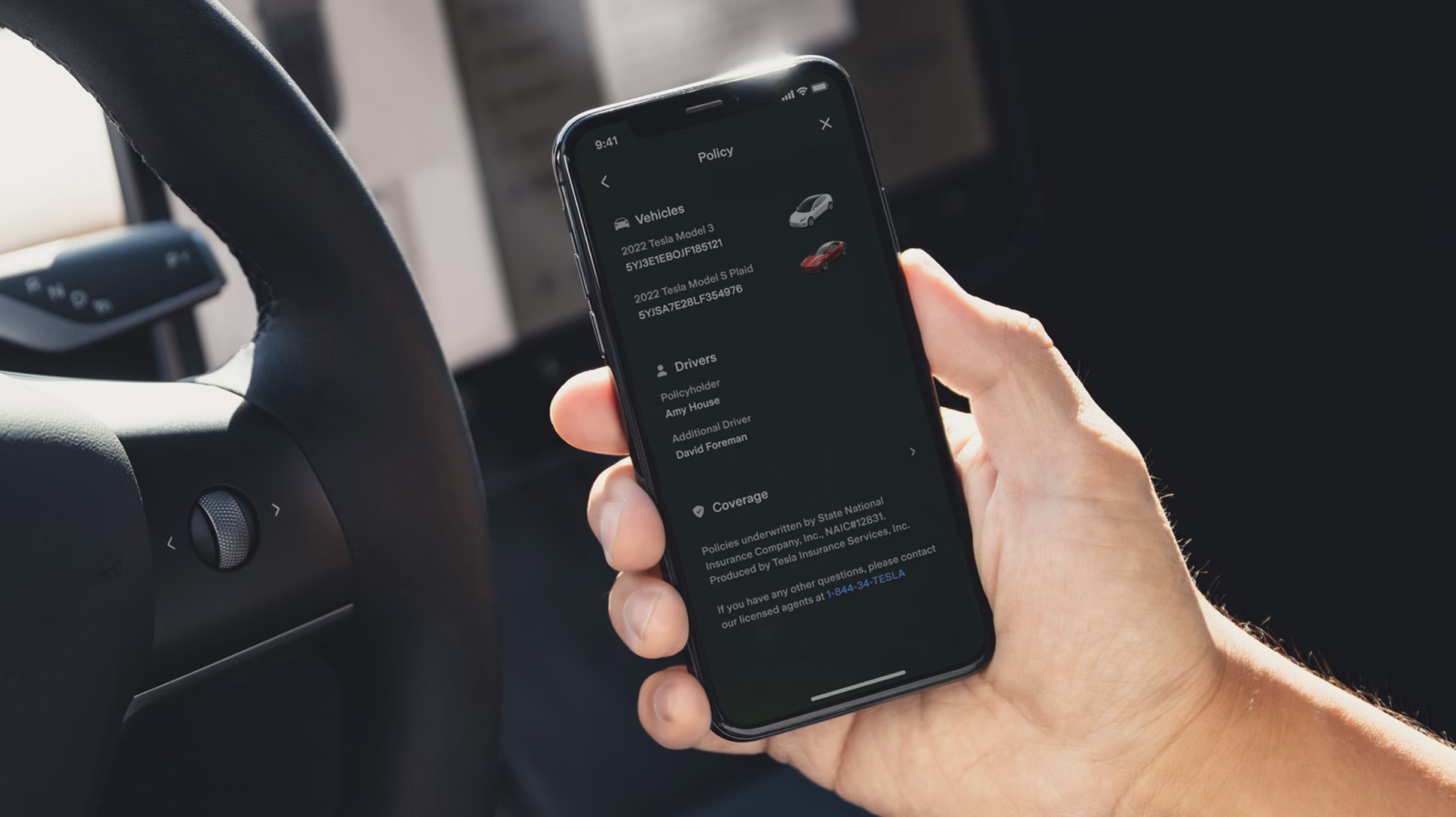
Tesla Insurance has officially expanded to a new U.S. state, its thirteenth since its launch in 2019.
Tesla has confirmed that its in-house Insurance program has officially made its way to Florida, just two months after the company filed to update its Private Passenger Auto program in the state. It had tried to offer its insurance program to drivers in the state back in 2022, but its launch did not happen.
Instead, Tesla refiled the paperwork back in mid-October, which essentially was the move toward initiating the offering this month.
BREAKING: Tesla Insurance has just officially launched in Florida.
This is the first new state to receive @Tesla Insurance in more than 3 years. In total, Tesla insurance is now available in 13 U.S. states (map in thread below of all the states).
Tesla Insurance in Florida uses… pic.twitter.com/bDwh1IV6gD
— Sawyer Merritt (@SawyerMerritt) December 17, 2025
Tesla’s in-house Insurance program first launched back in late 2019, offering a new way to insure the vehicles that was potentially less expensive and could alleviate a lot of the issues people had with claims, as the company could assess and repair the damage itself.
It has expanded to new states since 2019, but Florida presents a particularly interesting challenge for Tesla, as the company’s entry into the state is particularly noteworthy given its unique insurance landscape, characterized by high premiums due to frequent natural disasters, dense traffic, and a no-fault system.
Annual average premiums for Florida drivers hover around $4,000 per year, well above the national average. Tesla’s insurance program could disrupt this, especially for EV enthusiasts. The state’s growing EV adoption, fueled by incentives and infrastructure development, aligns perfectly with Tesla’s ecosystem.
Moreover, there are more ways to have cars repaired, and features like comprehensive coverage for battery damage and roadside assistance tailored to EVs address those common painpoints that owners have.
However, there are some challenges that still remain. Florida’s susceptibility to hurricanes raises questions about how Tesla will handle claims during disasters.
Looking ahead, Tesla’s expansion of its insurance program signals the company’s ambition to continue vertically integrating its services, including coverage of its vehicles. Reducing dependency on third-party insurers only makes things simpler for the company’s automotive division, as well as for its customers.
